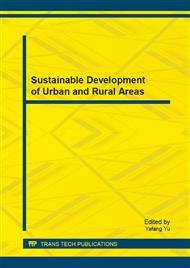p.222
p.226
p.230
p.234
p.238
p.242
p.245
p.249
p.254
Experimental Study on Sound Absorption Property of Porous Concrete Pavement Layer
Abstract:
In this paper, Sound absorption property tests of porous concrete pavement specimens which porosity of 15%, respectively, 17%, 20%, 22%,25% and a thickness of 40mm, 50mm, 60mm have been done by standing wave tube in different frequencies. The experimental results showed that the different porosity specimens sound absorption capacity shows little difference in low-frequency sound. As the porosity of porous concrete pavement layer specimen increases, the absorption coefficient increases. Under the same porosity as the porous concrete pavement thickness increases, the sound absorption coefficient in low-frequency tends to increase, and in high-frequency, it tends to decrease. The mix design of porous concrete pavement should be considered about permeability, strength, acoustic performance and other factors. The paper recommends porous concrete pavement porosity ranges 17-22%.
Info:
Periodical:
Pages:
238-241
Citation:
Online since:
January 2014
Authors:
Price:
Сopyright:
© 2014 Trans Tech Publications Ltd. All Rights Reserved
Share:
Citation:


